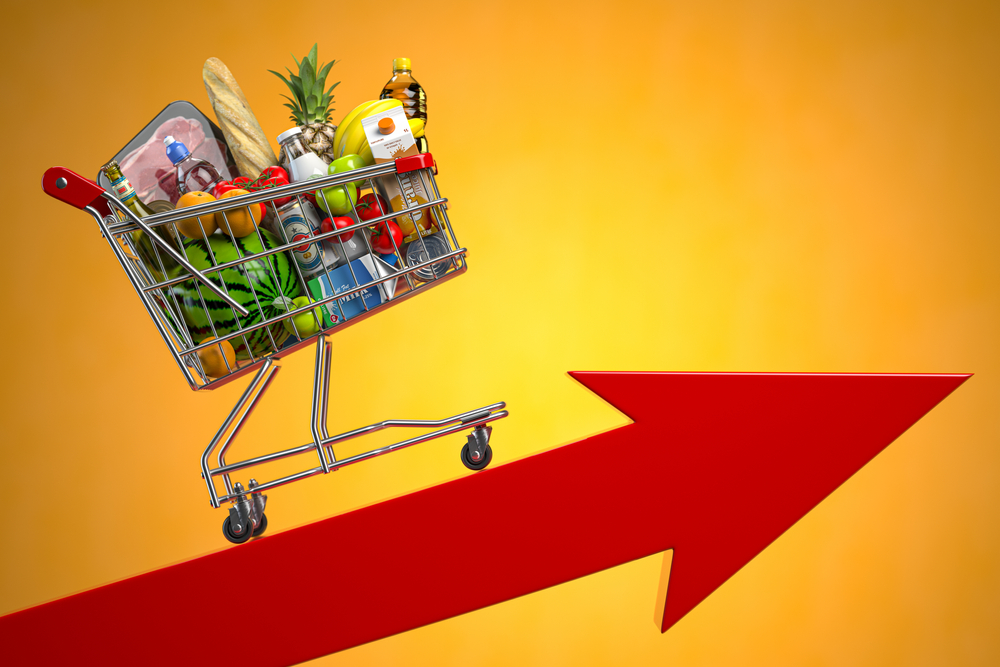Household Bills
Inflation runs ‘further and faster’ than expected at 9.4% in June

The Consumer Prices Index (CPI) measure of inflation jumped to 9.4% in June, above forecast figures, but further painful rises are yet to come.
This takes inflation to a 40-year high, according to the Office for National Statistics (ONS). It jumped from 9.1% in May, and exceeds the 9.3% consensus forecast.
The ONS said rising prices for motor fuels and food resulted in the largest upward contributions to the monthly rates in June 2022.
Within transport, there was a 42.3% rise in the price of motor fuels – the highest rate since ONS records began in January 1989.
Average petrol prices stood at 184p per litre in June 2022, compared with 129.7ppl a year earlier. Meanwhile the average price of diesel in June 2022, which was 192.4 pence per litre, was also the highest recorded.
However, the category rise was partly offset by a 2.5% fall in the cost of second-hand cars.
Separately, food prices rose 9.8% in the year to June 2022, up from 8.7% in May. This is the highest rate since March 2009, and the ONS said the largest upward effect came from milk, cheese and eggs, compared with price falls a year ago. Vegetables, meat and ready meals also saw price hikes.
And turning to restaurants and accommodation, prices here rose 8.6% in the year to June, up from 7.6% in May. This was the highest since the 8.6% recorded in August 2021, which was influenced by the previous year’s Eat Out to Help Out scheme.
Further, the price of clothing and footwear eased as the figure came in at 6.1%, down from 6.9% in May. The ONS said prices normally fall at this time of year as the summer sale season begins, “but there was little movement in 2022, and in 2021, prices were still rising following the end of the coronavirus lockdown”.
‘Inflation peak higher than predictions’
Les Cameron, savings expert at M&G Wealth, said: “We now see the inflation peak is going to be higher than earlier predictions. What we don’t know is where it will stop and for how long these high rates will be around.
“Inflation will hit people in various ways, so depending on your age and lifestyle your reality may seem wholly different. Those spending a lot of time at home, pensioners for example, or the new army of people working from home, may feel they are experiencing much higher inflation, with increased energy and food prices and, for many, the dramatic rise in the cost of fuel taking their toll.
“People may have been feeling the heat over the last few days, but they’ll be feeling it financially when they need to turn the central heating back on in a few months’ time.
Ed Monk, associate director, personal investing at Fidelity International, said today’s rise in inflation adds to the evidence that the cost-of-living squeeze is going to get worse before it gets better.
“An increase was expected but at 9.4% the annual CPI rate recorded today exceeds forecasts and suggests the surge in inflation is running further and faster than expected. It was transport costs that added the most to the overall rate in the year to June, with drivers having to swallow a 42.3% rise in motor fuels.
“And the upward pressure on prices will only continue when further painful rises in energy bills come through in the Autumn.
“The inflation number has to be read alongside data on pay, which yesterday showed wages rising but still lagging prices, meaning households are getting poorer in real terms. The rise in CPI today means the squeeze on wages will get worse.”
Monk added: “The Bank of England has been left playing catch up and, despite tightening interest rates aggressively this year, may have to increase borrowing costs yet further and faster in order to prevent a more widespread inflationary spiral.”
The Bank of England’s Monetary Policy Committee forecast inflation to breach 11% in October. Meanwhile, average energy bills are set to hit £3,363 in the New Year, heaping more pressure on household finances.